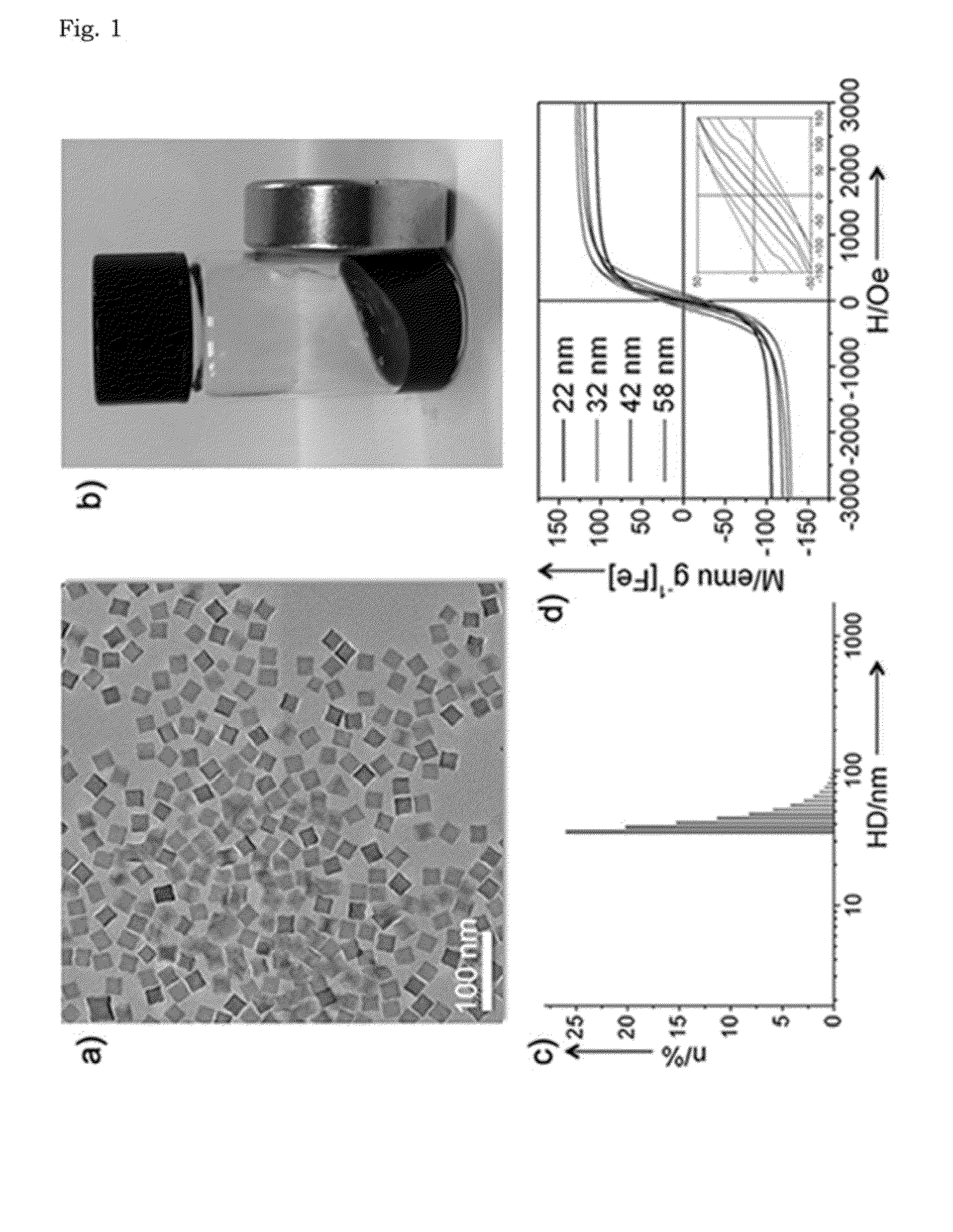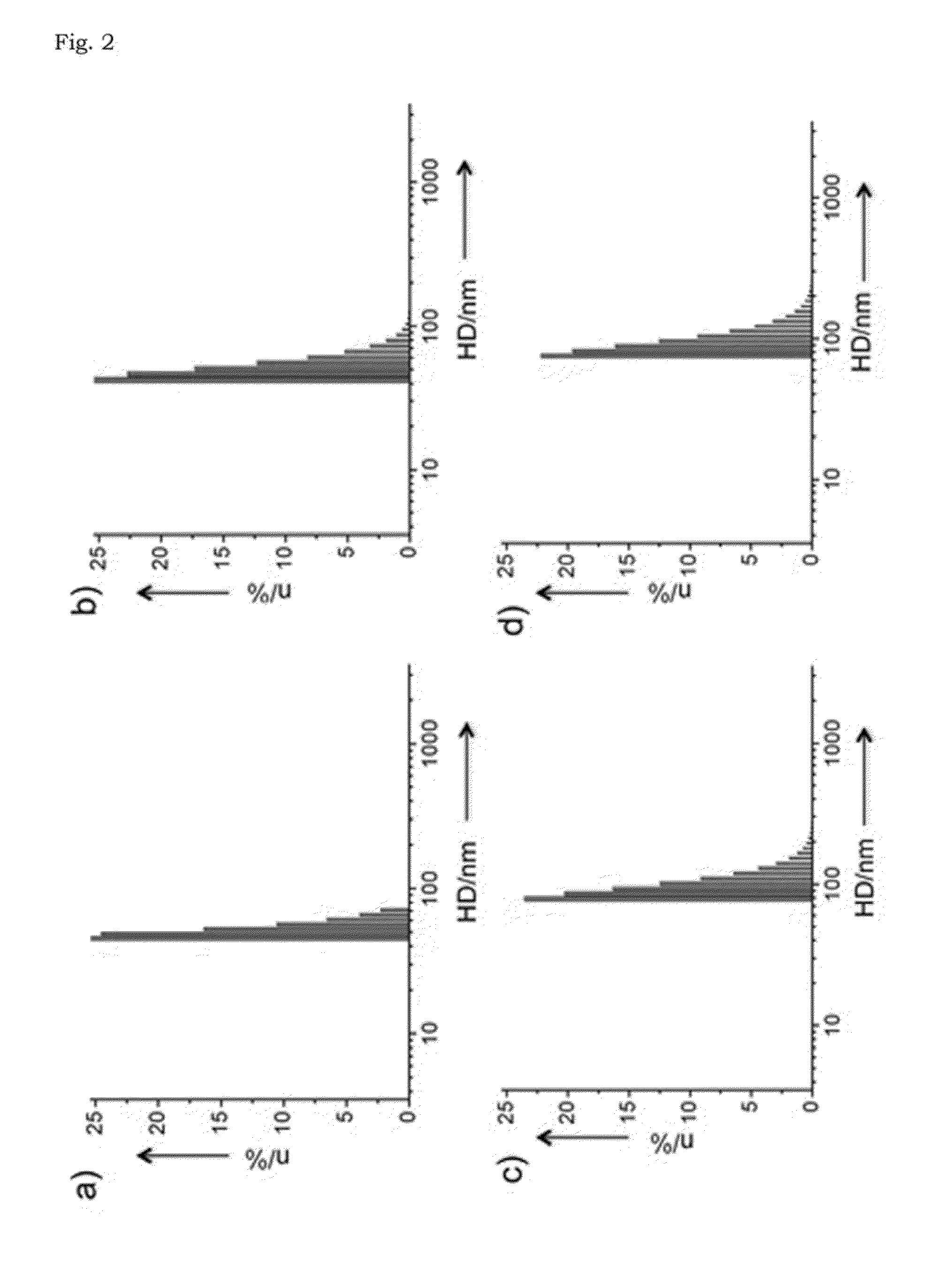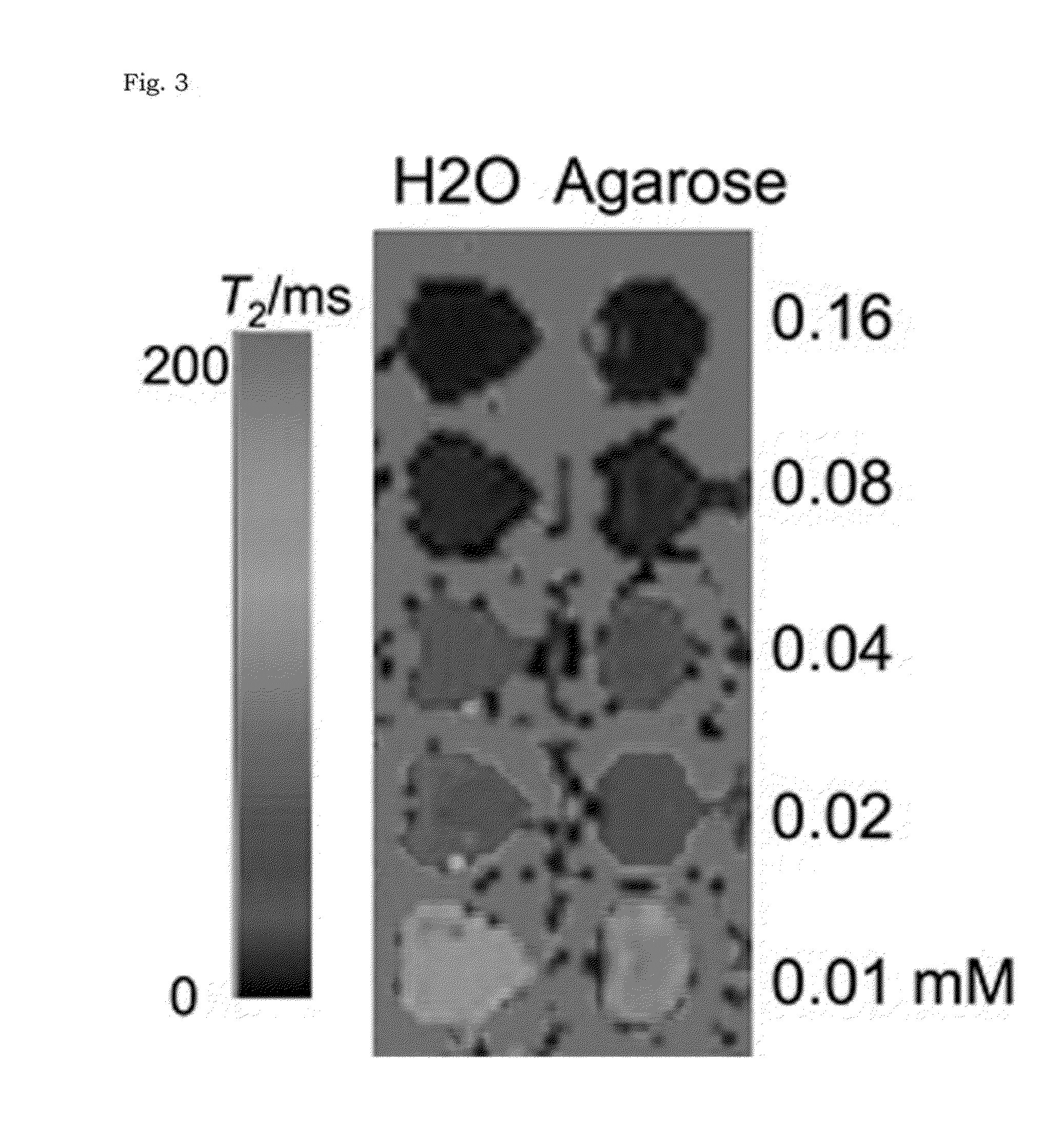Iron oxide nanocomposite, magnetic resonance imaging t2 contrast medium comprising same, and method for manufacturing same
a technology of magnetic resonance imaging and nanocomposites, which is applied in the direction of diagnostics, sensors, diagnostic recording/measure, etc., can solve the problems of poor colloidal stability, difficult control of magnetic properties and relaxivity, and organ damage, and achieve significant t2 contrast effects
- Summary
- Abstract
- Description
- Claims
- Application Information
AI Technical Summary
Benefits of technology
Problems solved by technology
Method used
Image
Examples
example 1
Preparation of Iron Oxide Nanocomposite
[0052]Iron (III) acetylacetonate (0.706 g, 2 mmol, Acros, 99%) was added to a mixture composed of oleic acid (1.27 g, 4 mmol, Aldrich, 90%), 4-biphenylcarboxylic acid (0.4 g, Acros 95%), and benzyl ether (10.40 g, 10 ml, Aldrich, 99%). The mixture solution was degassed at room temperature for 1 hour. The solution was then heated to 290° C. at the heating rate of 20° C. / min with vigorous magnetic stirring to prevent aggregation. The reaction mixture was maintained at this temperature for 30 minutes. After cooling the solution to room temperature, ethanol or acetone was added to the solution. The solution was then centrifuged at 1,700 rpm for 10 minutes to precipitate the particles. The separated precipitate (ferrimagnetic iron oxide nanoparticle (FION)) was dispersed in nonpolar solvent such as chloroform and n-hexane (10 ml).
[0053]The resulting nanoparticles were then encapsulated by PEG-phospholipid shell to endow them with biocompatibility an...
example 2
Characterization of Iron Oxide Nanocomposite
[0054]Transmission electron microscopy (TEM) images of the iron oxide nanocomposite obtained in Example 1 were taken on a JEOL JEM-2010 electron microscope at 200 kV. Samples were prepared by dropping small volume of particle dispersion onto a carbon-coated copper grid. The hydrodynamic diameters of nanoparticles were measured with a particle size analyzer (ELS-Z2, Otsuka). M-H curves were obtained by the vibrating sample magnetometer (VSM, Quantum Design PPMS). The iron concentrations of nanoparticles were measured with inductively coupled plasma atomic emission spectroscopy (ICP-AES) using ICPS-7500 spectrometer (Shimadzu).
[0055]The transmission electron microscopy (TEM) image shows that cube-shaped nanoparticles were obtained with an average size of 22±2.6 nm (FIG. 1a). Since the nanoparticles synthesized in the present Example are very hydrophobic, the iron oxide nanocomposites were transferred to aqueous media by encapsulation with po...
example 3
Measuring of MR Relaxivity of Ferrimagnetic Iron Oxide Nanoparticles (FIONs)
[0059]In order to measure MR relaxivity, ferrimagnetic iron oxide nanoparticles, obtained in Example 1, of 22, 28, 32, 42, and 49 nm in size were dispersed in 1% agarose solution (analytical grade agarose; Promega) to prevent sedimentation. T2 values of the nanoparticles were measured using the Carr-Purcell-Meiboom-Gill (CPMG) sequence with a head coil on a 3-T MR scanner (TrioTrim, Siemens): TR=5000 me, TE=16, 32, 48, 64, 20, 40, 60, 80, 50, 100, 150, 200 ms. Fast spin echo T2-weighted MR images of the phantom were acquired using the following parameters: flip angle=120, ETL=18, TR=6000 me, TE=90 ms, field of view FOV=119×170 mm2, matrix=448×640, slice thickness / gap=1.4 mm / 1.8 mm, NEX=1.
[0060]The r2 relaxivities of the iron oxide nanocomposites and larger ferrimagnetic iron oxide nanoparticles were measured using a 3-T clinical MR scanner. Given that the ferrimagnetic iron oxide nanoparticles larger than 30...
PUM
| Property | Measurement | Unit |
|---|---|---|
| temperature | aaaaa | aaaaa |
| size | aaaaa | aaaaa |
| size | aaaaa | aaaaa |
Abstract
Description
Claims
Application Information
 Login to View More
Login to View More - R&D
- Intellectual Property
- Life Sciences
- Materials
- Tech Scout
- Unparalleled Data Quality
- Higher Quality Content
- 60% Fewer Hallucinations
Browse by: Latest US Patents, China's latest patents, Technical Efficacy Thesaurus, Application Domain, Technology Topic, Popular Technical Reports.
© 2025 PatSnap. All rights reserved.Legal|Privacy policy|Modern Slavery Act Transparency Statement|Sitemap|About US| Contact US: help@patsnap.com



